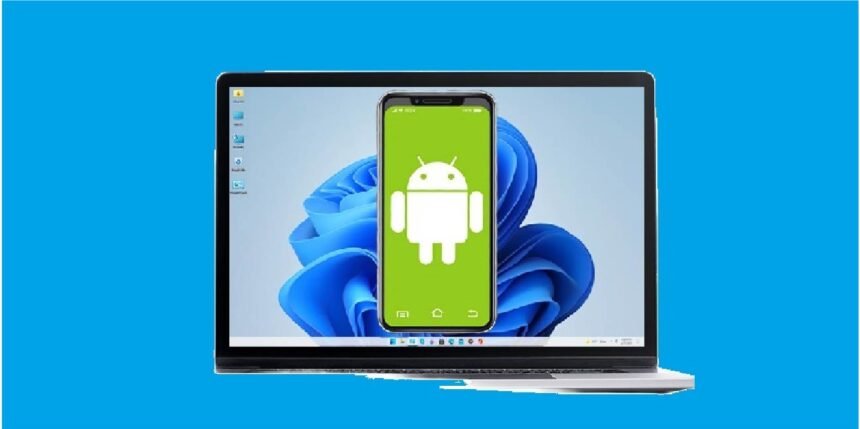If developers are looking to test their apps or just want to use Android websites on a Mac environment, they will need an Android emulator Mac. Unfortunately for Mac users, it is generally much harder to run Android apps than Windows users because of compatibility and performance issues. However, today, some successful Android emulators now have native macOS installations that allow developers to run mobile apps on macOS with little hassle.
A Mac Android emulator emulates a virtual Android environment on a user’s computer, allowing them to install and run mobile applications without needing an actual Android device. They also prove useful for developing an app or trying to troubleshoot a problem with the app, the emulator will ease such tasks.
The ideal Android emulator for Mac will depend on users’ needs for high performance, ease of use, development tools, or gaming optimization. Some emulators are tailored more for app testing with features such as simulating devices and testing network conditions, while some emulators are optimized for high-speed gaming with controller support.
In this guide, we will explore the best Android emulators for Mac currently available. We’ll cover their features and help testers pick the one that best fits their workflow. Whether they are using an Intel-based Mac or the latest M1/M2 chip models, there’s an emulator designed to meet their requirements. Let’s dive into the top options and find the perfect Android emulator for Mac.
An Overview of Android Emulator
Developers can employ a virtual device called the Android Emulator to test and debug Android applications instead of a real physical device. It is especially valuable to app developers because it emulates real device conditions such as hardware specifications, screen sizes, and Android versions.
The emulator is integrated into Android Studio and offers access to highlights such as GPS area, camera, arrange reenactment, and sensor imitation. By giving various framework pictures that cater to both ARM and Intel-based designs, it permits developers to test with apps over different device configurations.
In any case, the Android emulator can be demanding on macOS, as virtualization depends on Apple’s Hypervisor Framework instead of Intel’s HAXM. Developers can improve the speed of emulators either through emulation, changing emulator configurations, or enhancing hardware. The Android emulator does have speed constraints, but it remains a useful tool for Android developers because it enables the development and testing of apps on many different versions and configurations of Android devices.
Why Use an Android Emulator for Mac?
Emulators for Android on a Mac provide developers, testers, and users with numerous benefits. Here are some of the main reasons testers require an emulator:
App Development and Testing: Instead of having to use multiple physical devices to build, run, and test mobile applications, Android emulators offer virtual environments to developers. Testers can also replicate screen sizes, different Android versions, and other hardware conditions, allowing them to check how their app performs on many devices.
Cross-Platform Flexibility: Mac users often need access to Android apps, especially while working on cross-platform apps. An emulator allows users to overcome this usability gap by being able to run Android apps natively on their Mac without having to dual-boot or use complex workaround features.
Access to Android Exclusive Apps: Some applications are only available on Android and not on iOS. An Android emulator Mac setup allows users to run Android applications on a MacBook / iMac without interruptions.
Cost and Convenience: For testers who need to test applications on multiple Android smartphones and tablets, an Android emulator is a reasonable and easy replacement. Testers can emulate many types of devices from their Mac.
Enhanced Debugging Tools: Emulators come with built-in debugging support, network simulation features, and performance profiling tools, enabling developers to check if their apps are running efficiently or not.
Key Features of an Android Emulator for Mac
There are many features to consider whether a developer or tester when selecting an Android emulator for Mac, that best meet their needs. Below are the key features to consider:
Drag and Drop APK Installation: Most modern Android emulators for Mac allow testers to install APK files by simply dragging and dropping them into the emulator window, speeding up testing and app installation.
Device Simulation: An emulator simulates various Android devices that have different screen sizes/resolutions. This is important for developers because they will need to run their apps on several phones or tablets, in emulator mode, without having to own the devices. The emulators also allow features like rotation, PDF mock GPS, and multi-touch input, which can replicate a real-world testing sample.
Android Version Flexibility: The ability to run multiple variations of the Android operating system, from older builds to the latest releases, helps to ensure that the user app is backward compatible and future compatible. Developers can easily toggle between API levels and examine the app behavior across versions.
Performance Optimization Tools: High-quality emulators provide options for setting CPU, RAM, and GPU to configure how much the user wants to allocate based on their individual needs. Some emulators also provide hardware acceleration support for even smoother performance and load times.
Integration with Development Tools: For developers to easily deploy an app, test it live, and debug from the IDE environment, seamless integration with the IDE is necessary.
User-Friendly Interface: A thoughtfully designed, user-intuitive interface convinces the new Android developer or emulator user that navigating and setting the configuration aren’t difficult. Emulators with customizable UI and toolbars significantly enhance productivity.
Top Android Emulators for Mac
There are many Android emulators for Mac, and each has been developed to suit different types of application development and testing needs. Android emulators are available in many configurations and specifications, from small apps built just for speed to rich, complex platforms built for professional app development. Each emulator has its unique functions. Here are the best Android emulators for Mac in detail:
LambdaTest
For developers looking for a cloud-based solution to testing Android apps on a Mac, LambdaTest offers one of the available options. In comparison to traditional emulators for local use, LambdaTest is a cloud-based Android emulator that testers can access within a browser.
LambdaTest is an AI-Native test orchestration and execution platform to scale manual and automated tests. The platform enables testers to test real-time and automation from 3000+ environments and real mobile devices.
The platform provides real-time Android automation testing, enabling developers to run their Android mobile apps and test cases across cloud-based virtual devices. It can be easily integrated with Appium and other frameworks, allowing developers to build, run, and debug test scripts from the cloud. This is a great advantage for teams following continuous integration/delivery (CI/CD) since it eliminates dependency on local resources and shortens testing cycles.
LambdaTest is a secure, scalable, and efficient solution for manual and automated testing of different Android OS versions, screen sizes, and various network conditions on their macOS environment. It helps teams working remotely or on multiple platforms avoid having to manage physical Android devices or heavy emulators installed locally, especially when considering options like an Android emulator for iPhone to support cross-device testing.
BlueStacks: BlueStacks is one of the most popular Android emulators for Mac due mainly to its ease of use and gaming performance. It allows compatibility with a ton of different Android games and apps and comes pre-loaded with mapping keyboard buttons, a gamepad, and multi-instance features. Even though BlueStacks generally focuses on gaming, users can use it for basic app testing.
NoxPlayer: It provides a good balance between gaming and app testing features. It has advanced keyboard mapping, allows script recording, and even root access instantly, making it more suitable for technical users. The emulator has a good interface and runs smoothly on mid to high-end Macs.
Genymotion: Genymotion is a comprehensive Android emulator built for developers. They can simulate more than 3000 device configurations, varying in screen sizes, Android versions, and hardware profiles. It runs both locally, on their desktop, and via the cloud, which is helpful to teams with CI/CD pipelines.
ARCHon Emulator: ARCHon is a lightweight browser-based emulator for Android apps running on Chrome. Rather than a traditional emulator interface, it allows testers to run APKs as Chrome extensions. Not great for gaming or extensive testing, but good for accessing Android apps quickly on a Mac without taking up resources.
Android Studio Emulator: The official Android Emulator included with Android Studio is the most accurate emulator for developing apps. Users get access to the latest Android APIs, virtual devices, and system images. It supports advanced debugging tools, sensor simulations, and network condition testing.
Tips for Optimizing Android Emulator Performance on Mac
Here are some thorough suggestions for optimizing emulator performance on Mac devices, especially useful when running Android emulators for development:
Use Cloud-Based Approach: A cloud platform simulates the act of offloading processing to remote servers, instead of relying upon local resources. LambdaTest allows testers to run Android virtual devices in the browser, which takes the load off the Mac’s CPU and RAM.
Allocate More RAM and CPU Resources: Most emulators allow testers to allocate system resources like RAM and CPU cores. Raising these settings will improve performance by significant margins, particularly when using demanding apps or games.
Enable Hardware Acceleration (HAXM): Make sure that hardware acceleration is enabled in their emulator settings. This gives the emulator better access to their Mac’s processor, which helps with speed and responsiveness. Intel Macs typically try this through Intel HAXM, while Apple Silicon (M1/M2) will use ARM-based virtualization, etc. macOS apps should be able to support virtualization in their emulators.
Use Lightweight or Optimized Emulators: Emulators selected for testing are often optimized for Mac, in particular M1 or M2 chips. Android Studio Emulator and Genymotion tend to be best for development environments, whereas BlueStacks and NoxPlayer offer great performance for casual users/gamers.
Use SSD Storage: Testers are running the emulator via SSD, which most modern Macs have by default, making loading the Android system image and apps much faster. When possible, avoid external HDDs or other slower storage options.
Conclusion
In conclusion, selecting the best Android emulator for Mac should be based on the tester’s needs. Options like BlueStacks and NoxPlayer are best for gaming purposes, while Genymotion and Android Studio Emulator are respectively for development and testing applications. This gives Mac users options for any use case available.
Regardless of the tester’s use case, each emulator has its strengths. Understanding their priorities, performance, compatibility, features, or usability will assure them that their decision will allow them to best run and test their Android apps on a Mac. For those wanting scalability, cross-device testing, or easy Android automation workflows, modern and flexible cloud-based platforms like LambdaTest help to remove the problems of local setup.
In the end, the right emulator will improve the workflow







